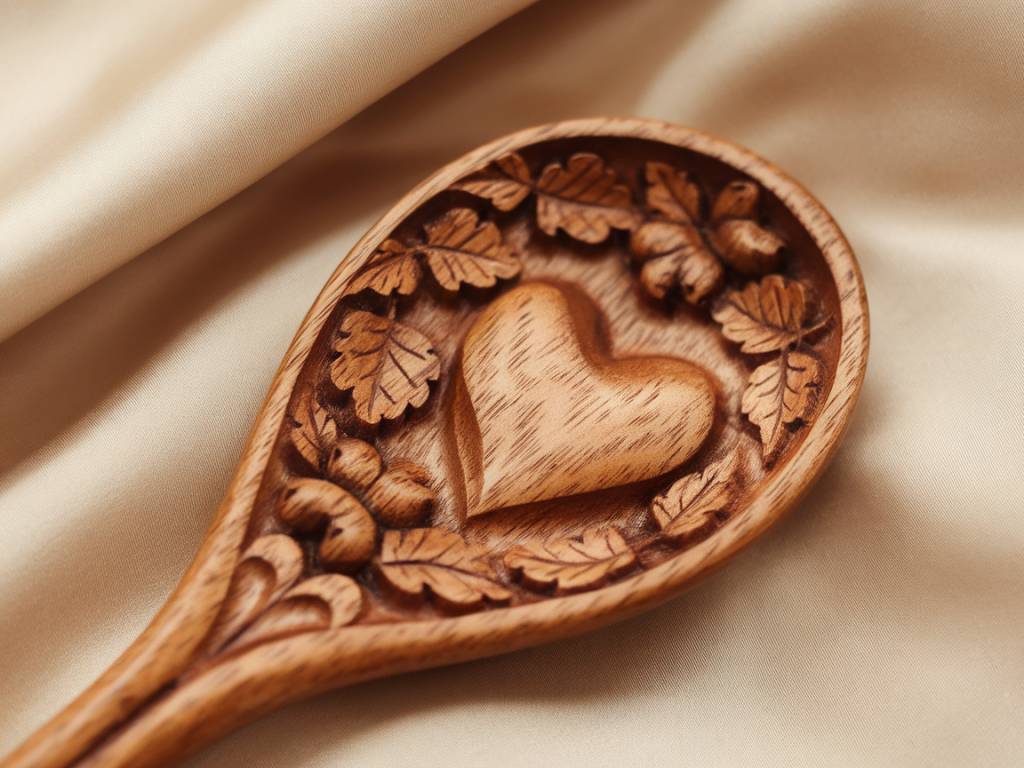The Timeless Craft of Welsh Love Spoons
As you wander through the winding lanes of Wales, venturing into markets, heritage sites, or quaint little shops, you’ve probably encountered the intricate beauty of Welsh love spoons. These elegant wooden carvings are more than just decorative objects—they’re a heartfelt tradition steeped in history, artistry, and symbolic significance. But what exactly are Welsh love spoons, and why have they captured the hearts (and imaginations) of so many people around the world?
What Are Welsh Love Spoons?
A Welsh love spoon, or « llyspiau caru » in Welsh, is a handcrafted wooden spoon traditionally carved as a token of love and affection. Dating back to the 17th century, these spoons were not merely functional items in the kitchen; they were works of art, imbued with deep meaning and emotion. They were often presented by young men to their sweethearts as a way of expressing devotion and intent—essentially, an early form of a proposal! Instead of a diamond ring, imagine receiving a beautifully carved spoon, every design element thoughtfully representing the carver’s feelings or hopes for the relationship.
The Symbolism Behind the Designs
One of the most fascinating aspects of Welsh love spoons is their symbolism. Each carve, knot, or motif tells a story or holds a specific meaning. Here are some common symbols you might find:
- Hearts: The universal symbol of love and unwavering devotion.
- Chains: Representing the strength of the bond between two people.
- Keys and Keyholes: Symbolizing the giver’s wish to unlock the recipient’s heart.
- Infinity Knots: Denoting eternal love and commitment.
- Bells: Often a wish for marriage and future celebration.
- Ships: Signifying a journey through life together, or a sailor’s love waiting ashore.
These symbols weren’t arbitrary. In a time when literacy wasn’t widespread, the spoons served as a visual code, a carved love letter if you will. Is it any wonder why they remain so captivating even today?
From Humble Beginnings to Fine Artistry
The origins of love spoons are believed to be deeply practical. Early spoons were likely whittled by young farmers or carpenters during long, quiet winter evenings. Using scraps of wood, they would create rudimentary designs to win the hearts of potential brides. But as time passed, the craft evolved into an intricate art form, with skilled artisans creating masterpieces that could rival any fine jewelry or artwork.
Some love spoons went far beyond romantic gestures. They became part of family traditions, passed down from one generation to the next. Others were carved to commemorate special occasions such as births, anniversaries, or even political milestones in Welsh history. The spoons thus became both personal and communal artifacts that reflect the richness of Welsh culture.
An Enduring Legacy
While modern-day Wales might be a far cry from the agrarian society of the past, the tradition of Welsh love spoons endures. You’ll now find them displayed in museums, crafted by artisans for tourists, and even exchanged as gifts for weddings or Valentine’s Day. Why has this tradition survived for centuries? Perhaps it’s because of their universal appeal—the combination of artistry, history, and romance transcends time and trends.
One family-run business in the heart of Carmarthenshire, for instance, continues to hand-carve love spoons using locally sourced timber. Their designs have expanded to include contemporary themes while still retaining the traditional craftsmanship at the core. It’s this blend of old and new that keeps the tradition alive and thriving.
How to Choose the Perfect Welsh Love Spoon
Interested in owning (or gifting) a Welsh love spoon? Here are some tips to help you choose the perfect one:
- Consider the design: Pay attention to the carvings and their meanings. A spoon with hearts and flowers might be ideal for a romantic partner, while one featuring vines and leaves could symbolize growth and new beginnings.
- Look at the wood: Many artisans use local woods like oak, ash, or sycamore. Each type of wood brings its own character and charm to the piece.
- Support local artisans: Authenticity matters. Whenever possible, purchase directly from a Welsh artisan to ensure you’re getting a genuine handcrafted piece.
- Personalize it: Many makers offer customization, allowing you to add initials, dates, or even a short message.
A Welsh love spoon isn’t just a keepsake—it’s a meaningful connection to history and culture. Whether you’re buying one as a gift or as a treasured decoration for your home, it’s a timeless reminder of love and tradition.
Where to See Welsh Love Spoons in their Full Glory
If you’re still curious about these beautiful carvings, there are several places in Wales where you can delve deeper into their history:
- The Lovespoon Gallery in Mumbles: A dedicated gallery showcasing both traditional and contemporary designs from highly skilled artists.
- The Museum of Welsh Life, St Fagans: Here, you can see antique love spoons and learn more about their evolution over the centuries.
- Local artisan shops and markets: Many towns across Wales host craft markets where you can watch spoon carvers at work or purchase a one-of-a-kind piece.
Visiting these places lets you witness firsthand the extraordinary skill and passion that go into crafting each spoon, as well as the enduring legacy of this charming tradition.
Carve a Piece of Wales Into Your Life
Welsh love spoons are far more than just spoons—they are expressions of love, tokens of artistry, and symbols of Welsh heritage. From rural farmhouses to trendy boutiques, their journey has spanned centuries, evolving yet keeping their essence alive. Whether you’re Welsh or merely enchanted by its culture, a love spoon is a tangible way to connect with the heart of Wales.
So next time you’re tempted by a mass-produced keychain souvenir, consider reaching for a Welsh love spoon instead. After all, what better way to say, « I care about you, » than with a true piece of Welsh history, lovingly handcrafted to stand the test of time?

